1830s Underpinnings
All new, at least relatively - everything except the shift has been finished no earlier than June, I think. (I'm wearing my late 18th/early 19thc shifts with 1830s - they tend to be my default because they work with most eras!)
(Ugh, the photos are misbehaving - if they look wonky in the post they should still come up alright when you click on them! Grumble grumble.)
Starting from the inside out - under my corset I'm wearing aforementioned 18thc shift, and my (extremely wrinkly) 1860s under-hoop petticoat. I tend to wear a petticoat under most of my corsets, except when it's very hot...I didn't wear one to the dance this weekend! I usually wear one if I'll be dressing in a parking lot, though. They're very convenient for that!
The corset is the 1844 corset from Norah Waugh's Corsets & Crinolines, adjusted to fit me. It's actually the second version I've made of this corset; I made the first one in 2010 and it still fits just fine, but I made it of crappy materials and the back boning was coming out and poking me. Not great in a corset! So I remade it from the same pattern, but took a little more care with it.
It's made of one layer of cotton drill, and a layer of white-on-white tiny spot cotton print on top. A white corset is still the most practical at this point in my opinion, with sheer dresses still being quite common - but I thought a spot print would be slightly less boring to work with! (It was.)
It's boned with cable ties on each seam, and everything visible is hand-sewn. I sewed the pieces together by machine, and then the rest of it - boning channels, binding, &tc. - was sewn by hand.
The fit certainly isn't perfect - I think I must have taken a smaller seam allowance on the bust gussets on this corset than my old one, as there's a bit of gapping at the top. Not bad enough to make me want to take it apart and fix it, though! No thanks.
Very fussy backstitched gussets - I did everything else with a spaced backstitch instead!
On top of the corset is the corded petticoat. It's made of cotton sateen, and corded with hemp in tucks. Machine-sewn, because I enjoy hand sewing a lot but not quite that much!
I did three different tiers of cording width, mainly because it seemed fun rather than because it's anything I've seen in period. I don't recall which weight of hemp I used - it's thin enough that I doubled it in the channels, but it's not too thin.
The front panel is a gore, and the back is rectangular, so the hem comes to about 85" - any more than that and it really starts folding in on itself. The gore/rectangular construction is an educated guess, as a transition from the gored skirts of the 1820s to the rectangular skirts of the mid-late 1830s. Plus I want to be able to wear it under both rectangular and slightly gored dresses.
And there's a couch cushion in the bum!
I think it gets left off many modern recreations, but if you look at period illustrations and even caricatures of the early 1830s, there's usually some kind of bustle or bumpad. This one could even stand to be a little wider, but I'd made two already, so decided this one was Good Enough. It ties on to the waistband and is removable - partly because I don't want the bulk at the waist, and partly because this way I can wash the bumpad and petticoat independently of the other. Or make a bigger pad if I ever deem this one too small...
A lightweight linen-cotton blend petticoat goes on top! Petticoats of this period actually seem to be mostly plain, but I'd acquired a very nice fine muslin eyelet at M&J Trims shortly before I made this, and really wanted to use it!
And last but certainly not least, those sleeve puffs! Or, as I like to call them, the stupid puffers.
Now, as you might be able to see, I'm cheating horribly to get the puffs in the underwear shoot here - they're pinned to my shift sleeves, which is not really how they're worn.
They actually have narrow twill tapes sewn in the top, which tie to matching tapes in the armscye of a dress. Simple yet effective - they got bounced around all night at the dance this weekend and didn't move a jot, which was an excellent test of their effectiveness. And they cram through the small armscyes of dresses fairly easily...A lot of museum displays seem to imply that the puffers attach to the straps of stays, which I'm sure is also a legitimate way to do it. It just seems like too much work to try and squish a sleeve puffer AND an arm through the armscye of a dress at the same time! Plus, dresses are eventually so off-the-shoulder that strapped stays are no longer practical (like mine).
I didn't have a pattern for these, but they were VERY simple. I just made a small sleeve for the inner layer, guesstimated at how much puff I wanted, and cut a rectangle to gather down to the inner leyer to create the puff.
They're stuffed with duck feathers (yes, out of a pillow!), which was about as much of an adventure as I thought it would be. Do not under any circumstances consider stuffing your stupid puffers indoors! I did it on my front steps, and there were duck feathers all over the lawn for three days. The feathers are an excellent material for sleeve puffers, though; they're very lightweight, easy to stuff through small armholes, and don't compact down and get lumpy the way fiberfill does. They do cost more, but I've still got enough feathers to make at least the inner part of a muff, if not something else too. The pillow I got was 95% duck feathers, 5% duck down. There are higher percentages of down out there (and goose rather than duck), but mostly feathers was perfectly acceptable for stupid puffers.
And I think that's it about my 1830s undies! Next up is a c1880 print cotton dress, wanted for the beginning of September. I have the underskirt about 2/3 done so far.
The corset is the 1844 corset from Norah Waugh's Corsets & Crinolines, adjusted to fit me. It's actually the second version I've made of this corset; I made the first one in 2010 and it still fits just fine, but I made it of crappy materials and the back boning was coming out and poking me. Not great in a corset! So I remade it from the same pattern, but took a little more care with it.
It's made of one layer of cotton drill, and a layer of white-on-white tiny spot cotton print on top. A white corset is still the most practical at this point in my opinion, with sheer dresses still being quite common - but I thought a spot print would be slightly less boring to work with! (It was.)
 |
| Crooked shift is crooked. Uneven shoulders are uneven! |
The fit certainly isn't perfect - I think I must have taken a smaller seam allowance on the bust gussets on this corset than my old one, as there's a bit of gapping at the top. Not bad enough to make me want to take it apart and fix it, though! No thanks.
 |
| Inside the corset - the boning channels are grosgrain, and I covered the gusset seam allowances with cheap satin ribbon, just to make it all look neat. |
On top of the corset is the corded petticoat. It's made of cotton sateen, and corded with hemp in tucks. Machine-sewn, because I enjoy hand sewing a lot but not quite that much!
I did three different tiers of cording width, mainly because it seemed fun rather than because it's anything I've seen in period. I don't recall which weight of hemp I used - it's thin enough that I doubled it in the channels, but it's not too thin.
The front panel is a gore, and the back is rectangular, so the hem comes to about 85" - any more than that and it really starts folding in on itself. The gore/rectangular construction is an educated guess, as a transition from the gored skirts of the 1820s to the rectangular skirts of the mid-late 1830s. Plus I want to be able to wear it under both rectangular and slightly gored dresses.
And there's a couch cushion in the bum!
I think it gets left off many modern recreations, but if you look at period illustrations and even caricatures of the early 1830s, there's usually some kind of bustle or bumpad. This one could even stand to be a little wider, but I'd made two already, so decided this one was Good Enough. It ties on to the waistband and is removable - partly because I don't want the bulk at the waist, and partly because this way I can wash the bumpad and petticoat independently of the other. Or make a bigger pad if I ever deem this one too small...
A lightweight linen-cotton blend petticoat goes on top! Petticoats of this period actually seem to be mostly plain, but I'd acquired a very nice fine muslin eyelet at M&J Trims shortly before I made this, and really wanted to use it!
And last but certainly not least, those sleeve puffs! Or, as I like to call them, the stupid puffers.
Now, as you might be able to see, I'm cheating horribly to get the puffs in the underwear shoot here - they're pinned to my shift sleeves, which is not really how they're worn.
They actually have narrow twill tapes sewn in the top, which tie to matching tapes in the armscye of a dress. Simple yet effective - they got bounced around all night at the dance this weekend and didn't move a jot, which was an excellent test of their effectiveness. And they cram through the small armscyes of dresses fairly easily...A lot of museum displays seem to imply that the puffers attach to the straps of stays, which I'm sure is also a legitimate way to do it. It just seems like too much work to try and squish a sleeve puffer AND an arm through the armscye of a dress at the same time! Plus, dresses are eventually so off-the-shoulder that strapped stays are no longer practical (like mine).
 |
| Tapes in the dress without the puff |
 |
| Stupid puffers are all hand-sewn! |
And I think that's it about my 1830s undies! Next up is a c1880 print cotton dress, wanted for the beginning of September. I have the underskirt about 2/3 done so far.

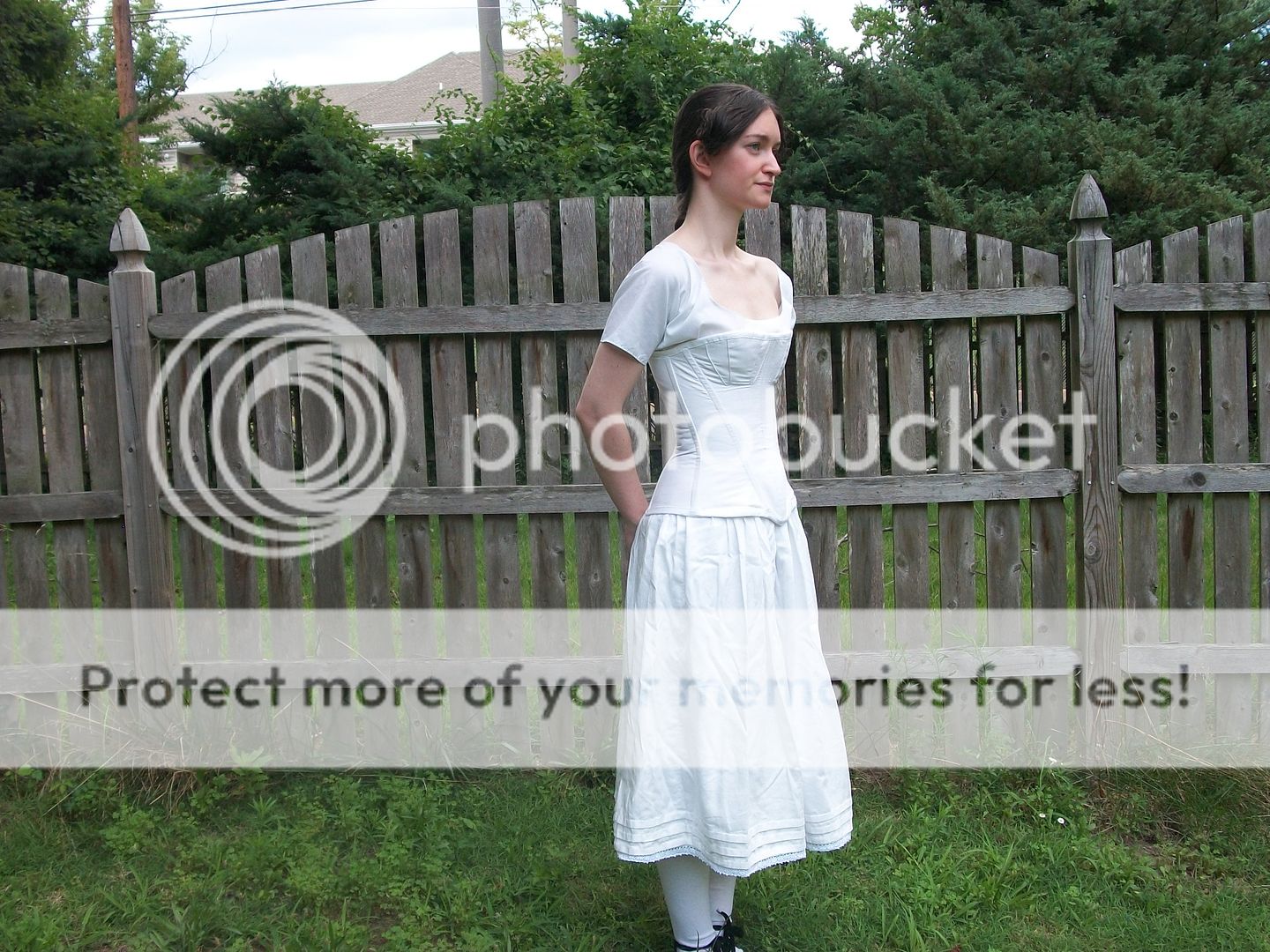






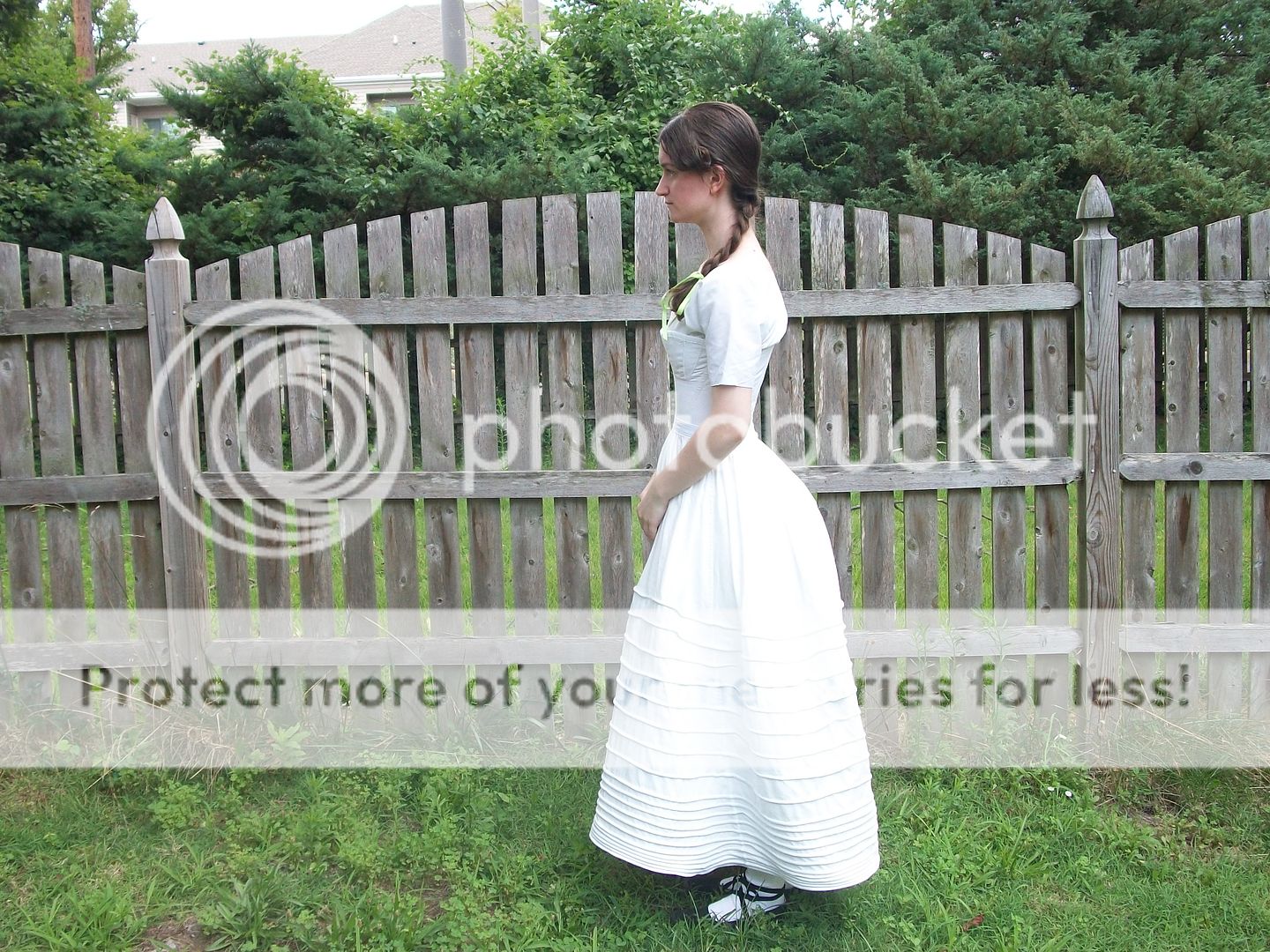



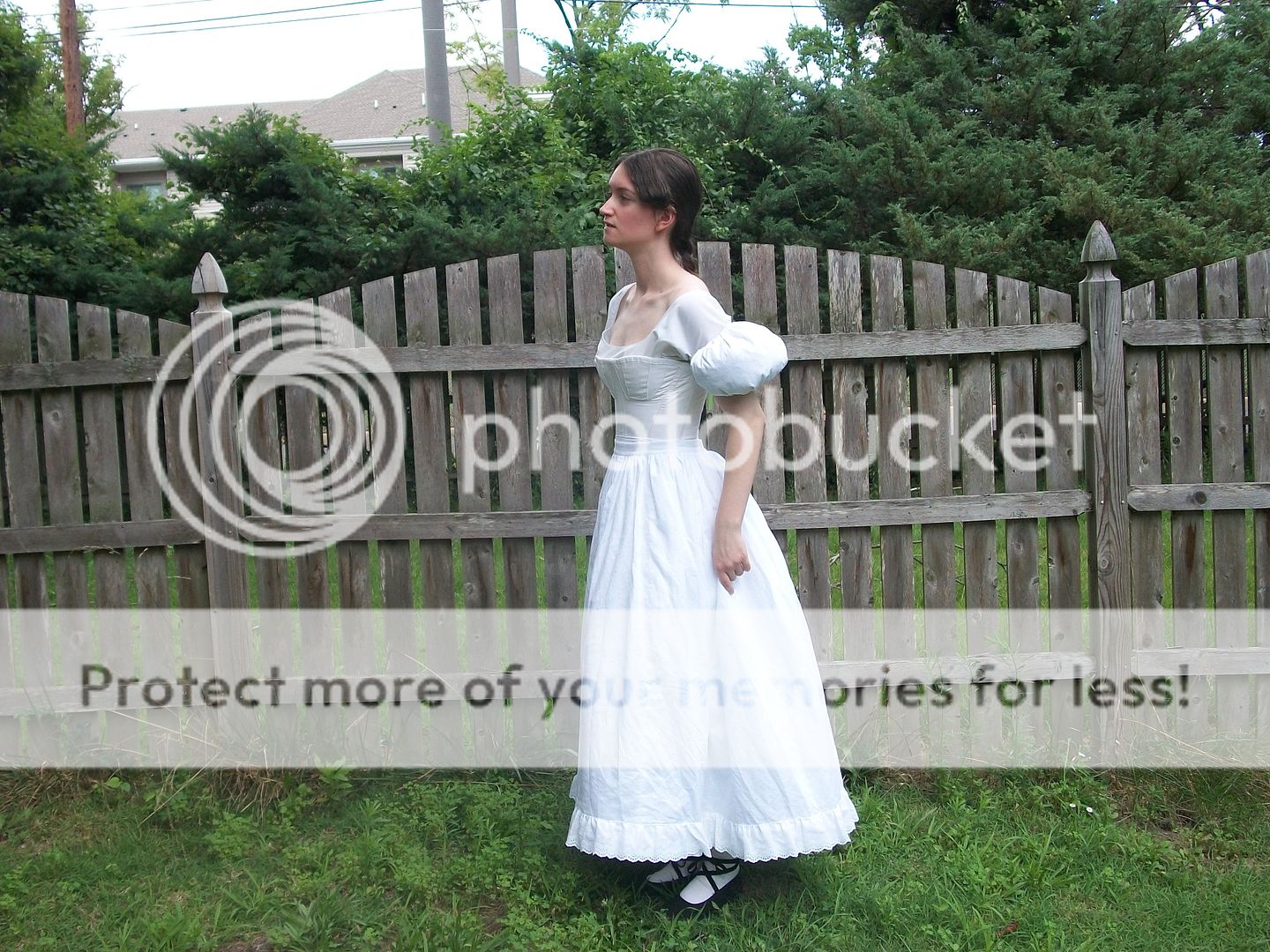
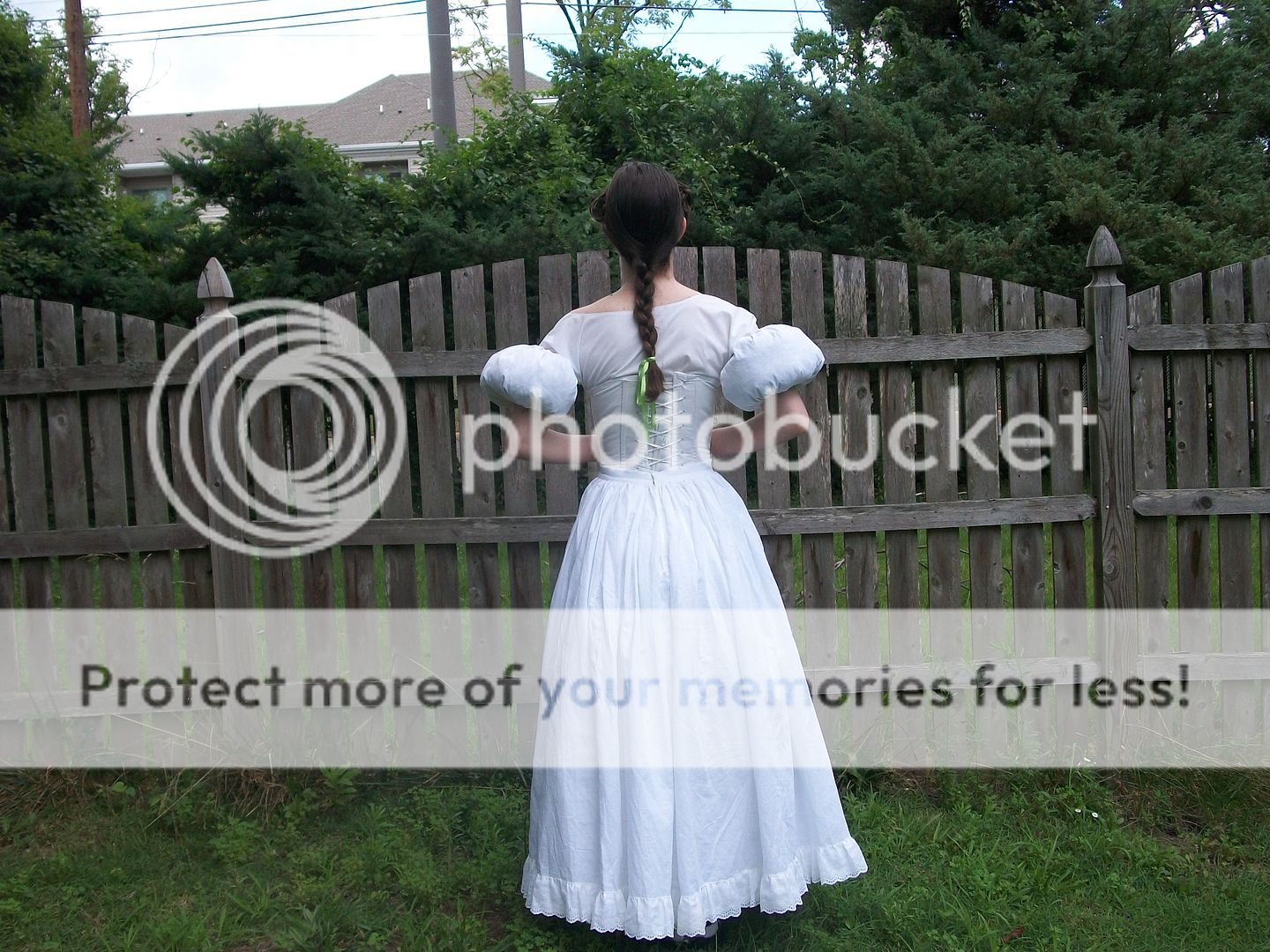
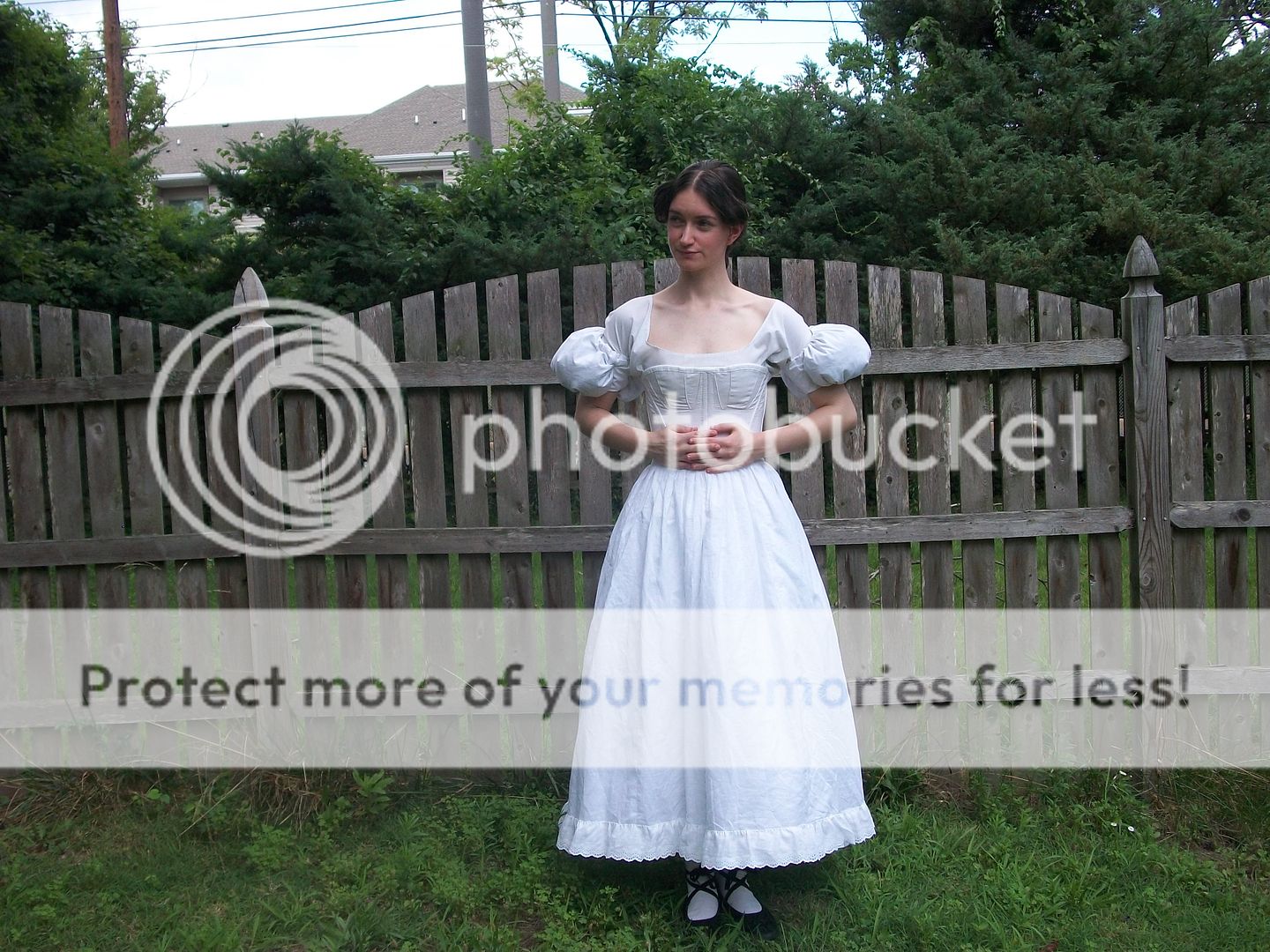





Wonderfully detailed post! A ridiculous 1830s dress is on my todo list so I need to make all the undergarments first, and this will be a great reference .
ReplyDeleteThanks! Compared to other, more popular periods, you don't see as much Romantic costuming, so I like to hear there'll be more of it. :)
DeleteThese are so great! Thanks for the informative post--I'm in the process of planning my first foray into the 1830s and everything you make is so cute. It's great to see what's underneath :)
ReplyDeleteYay, I'm always happy when my costuming is helpful to somebody, even just one person! You don't see a whole lot of 1830s out there so I thought an undies post might be nice to do.
DeleteWow thanks for all the really helpful details! I'm going to try an 1830s bustle myself soon. Also my friend Alice, is really excited for this post too. Fuck you Alice.
ReplyDeleteThat's a comfortable-looking corset, you did a lovely job!
ReplyDelete